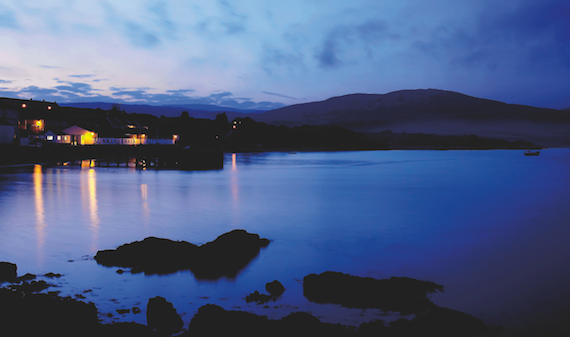They point to the new wave of marketers who seem to be winning the argument that whisky must evolve and innovate and in so doing are risking turning it into a commodity.
They ask themselves, does any of this really have anything to do with a sun-flecked loch next to Bowmore distillery?
And that raises the bigger question: can scotch whisky marry innovation and evolution with provenance and tradition?
You’d struggle to find anywhere that defines the word ‘traditional’ more clearly than Islay. Pronounced Eye-la, it lies off the west coast of Scotland and is an expanse of flat rugged beauty, craggy grassland and open, empty beaches. It’s also home to eight working whisky distilleries, with more on the way, and it’s famous for the big peaty, smoky, phenolic malts.
Islay actively plays up to its traditions, with Gaelic-sounding distilleries such as Laphroaig, Caol Ila and Bunnahabhain, and visitor centres and tours which reinforce the sense that whisky has been made here the same way for generations.
But the demands for, and on, the scotch whisky industry are as intense on Islay as anywhere else, and you don’t have to look very far to see how commerce is impacting on the island.
All of the island’s distilleries are operating at, or close to, full capacity, and many of them have benefited from substantial investment by their mainly foreign ownership.
Bowmore has a glittering and stylish new visitor centre, for instance, while a couple of years ago Diageo completed a £3.5m investment in expanding and upgrading Caol Ila distillery, seeing its production capacity increase by 700,000 litres per year from 5.7 million litres per annum (mla) to 6.4 million litres.
Ardbeg, too, has upped production.
“Basically, we are pulling out all the stops to produce as much spirit as possible,” says Bill Lumsden, who is director of distilling and whisky making for Glenmorangie and who oversaw the rebirth of Ardbeg on the island.
“The distillery is going absolutely flat out. Of course, we continue to ensure that every drop distilled is of the desired, high quality. In terms of new releases, we had Auriverdes, and have just launched Kildalton, which is released in conjunction with the Prince of Wales-inspired North Highland Initiative for charity and is only available from the distillery itself.”
Perhaps unsurprisingly, there have been two other effects from the surge in demand for Scottish single malts: one, the island has attracted more attention from the major international drinks companies, who have sought to buy up anything valuable. Most recently Bruichladdich has been bought by French giant Rémy Cointreau and Laphroaig has joined Bowmore in the Suntory stable. And two, new and smaller distillers have sought to establish themselves on the island.
Neither of these facts need be a negative. The investment guarantees a healthy future for whisky and the people who make it, and the new distillers may further enhance the island’s reputation. The issue is whether the changes will damage the island’s reputation.




